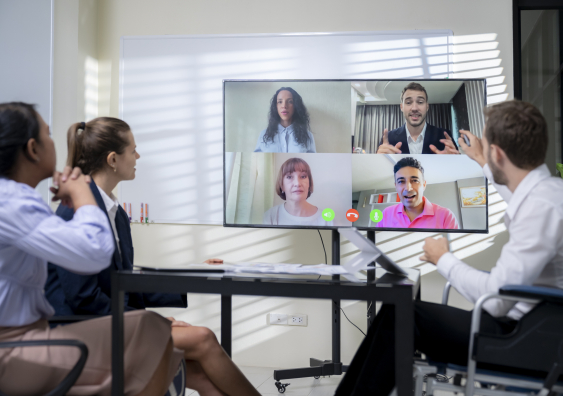Can Australian cities adapt to become more commuter-friendly or will the financial burden of travel force a fundamental shift in work arrangements?
AustraliaÔÇÖs rising cost of living is squeezing household budgets, and with high fuel prices and public transport costs increasing, many Australians face the reality that the expense of commuting to work may no longer be financially sustainable.
░ı│¾▒╠²┬áshowed that the average daily cost for an Australian to get to and from work is $20, totalling $5020 annually. Collectively, this translates to a national expense of $43.2 billion a year. The cost of public transportation is also increasing; Opal fares rose by 3.7 per cent in October 2023, as reported by┬á╠²╠²
Associate Professor Evgenia Dechter┬áfrom the ╣·▓·¥½ãÀ Business School says that the complex relationship between commuting costs and salaries is primarily based on preferences and household constraints. ┬á
ÔÇ£Individuals make choices based on their preferences, budgets and time constraints,ÔÇØ she says.
ÔÇ£Subject to constraints, some prioritise shorter commutes by living closer to work hubs, even if it means higher housing costs and lower quality housing. Others prioritise better living arrangements and may accept longer commutes.ÔÇØ
This raises the question: With rising economic pressures and commuting costs, will Australian cities transform to be more commuter-friendly, or will work arrangements undergo a fundamental shift?
The economic impact of commuting
While salaries may indirectly reflect commuting choices, A/Prof. Dechter acknowledges the growing economic pressure on workers as well as the current cost of living crisis combined with high inflation rates. 
ÔÇ£For many households, the current economic conditions imply tighter budget constraints, putting immense pressure on workers, which may in turn affect their commuting and employment choices,ÔÇØ says A/Prof. Dechter.
ÔÇ£Traditionally, commuting costs havenÔÇÖt been directly factored into salaries, but some employers are starting to explore ways to compensate for them.
ÔÇ£Employers offering remote work options are a positive development in mitigating commuting costs.
ÔÇ£Remote, hybrid and flexible work arrangements may not only alleviate the financial burden on employees but also potentially broaden the talent pool for firms struggling to find workers,ÔÇØ she says.
Public transport offers a cost-effective alternative for many commuters, but A/Prof. Dechter says improving infrastructure can also help with travel times.╠²╠²
ÔÇ£According to the┬á, only about 12 per cent of Australians who commute to work utilise public transport, highlighting the high costs associated with public transportation and the existing limitations in infrastructure, thereby indicating potential areas for improvement,ÔÇØ says A/Prof. Dechter. ┬á
ÔÇ£Investments in public transport infrastructure have the potential to substantially enhance both the affordability and efficiency of commuting for a considerable segment of workers.ÔÇØ┬á
City infrastructure is not designed for everyday commuting
The travel-to-work challenge is further amplified by the design of Australian cities, with urban sprawl leading to longer commutes and a need for more suitable housing options near workplaces. 
ÔÇ£The ugly truth of the matter is the shape of our cities is far from ideal to support sustainable and efficient commutingÔÇØ says┬áProfessor Philip Oldfield, a leading expert in architecture from the Faculty of Arts, Design & Architecture at ╣·▓·¥½ãÀ.
According to the  released in late 2023 by the Commonwealth Bank and Regional Australia Institute, this trend is reflected in a significant shift in migration patterns. The report highlights a 12.6 per cent increase in the population moving from capital cities to regional areas compared to pre-pandemic figures.
The rising cost of living may not be the only reason why itÔÇÖs harder for Australians to travel to work. Prof. Oldfield┬ásays that cities are expanding outwards with residential densities decreasing.╠²╠²
ÔÇ£ItÔÇÖs often cheaper and easier to build housing on the edge of cities rather than trying to ÔÇÿinfillÔÇÖ gaps in the city. In Sydney, 21 per cent of homes built in Greater Sydney were on the city edge across the last decade. We call this urban sprawl, and itÔÇÖs apparent in virtually all cities worldwide,ÔÇØ says Prof. Oldfield.
Media enquiries
Katie Miller, News and Content Coordinator:
Tel: +61 408 033 715
Email: katie.miller1@unsw.edu.au
Using Sydney as an example, Prof. Oldfield says we donÔÇÖt see enough family-friendly and three-bedroom apartments built near city centres and places of work.┬á
ÔÇ£This is because developers are creating apartments for those who purchase them ÔÇô which tends to be owner-investors, and not those who ÔÇÿactuallyÔÇÖ live in them, which includes families with children. Owner-investors prefer one- and two-bedroom apartments and thatÔÇÖs why these get built.
The ugly truth of the matter is the shape of our cities is far from ideal to support sustainable and efficient commuting.
ÔÇ£The impact of this is that families may want to stay in centrally located neighbourhoods, but because of a lack of family-friendly apartments, they either have to ÔÇÿcram inÔÇÖ to two-bedroom units not suited to the family dynamic or move further afield where more ÔÇÿconventionalÔÇÖ and affordable detached homes are located,ÔÇØ says Prof. Oldfield┬á
Prof. Oldfield explained that the knock-on effect is if they move further away, commute times increase, which can increase costs and lost time and subsequently make working at home more attractive. 
The power of hybrid and flexible work
With the economic and urban landscape placing a strain on wallets, hybrid work arrangements are becoming increasingly popular.
Dr Andrew Dhaenens, an expert in workplace relationships from ╣·▓·¥½ãÀ Business School, says that working from home and with more flexible hours is increasingly becoming more attractive.╠²╠²
ÔÇ£For those with longer commutes and caregiving responsibilities, working from home offers a significant financial benefit,ÔÇØ he says.╠²╠²┬á
ÔÇ£ThereÔÇÖs also a perception among employers that remote workers are more productive, further incentivising flexible work models.ÔÇØ
Both employers and workers are still adjusting to remote work, and new management strategies will emerge to ensure effective collaboration and communication, but an additional day in the office often comes at a direct cost to employees.
Dr Dhaenens says employers are becoming more accommodating to hybrid and flexible work patterns, yet employees are facing new pressures to spend more time in offices.
The showed that almost half of the employers say that they have a minimum requirement for full-time employees to be at the workplace between three and five days a week, up from 37 per cent during the same period in 2022.
Dr Dhaenens says that hybrid and flexible work is key to easing financial pressures and believes that hybrid models will likely stay the norm. 
ÔÇ£Employees save on commuting costs, lunches out, and public transport fares, but they also gain time back from their commute to spend more time with friends and family.
ÔÇ£Additionally, we know that work-life balance is key to employee wellbeing and productivity,ÔÇØ says Dr Dhaenens.
While some employers require employees to be in the office for a set number of days, Dr Dhaenens emphasises the negative impacts of return-to-office mandates and believes hybrid models will likely be here to stay.
ÔÇ£Both employers and workers are still adjusting to remote work, and new management strategies will emerge to ensure effective collaboration and communication, but an additional day in the office often comes at a direct cost to employees,ÔÇØ says Dr Dhaenens.









